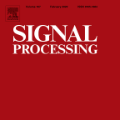Most of the digital signal processing applications performs operations like multiplication, addition, square-root calculation, solving linear equations etc. The physical implementation of these operations consumes a lot of hardware and, software implementation consumes large memory. Even if they are implemented in hardware, they do not provide high speed, and due to this reason, even today the software implementation dominates hardware. For realizing operations from basic to very complex ones with less hardware, a Co-ordinate Rotation Digital Computer (CORDIC) proves beneficial. It is capable of performing mathematical operations right from addition to highly complex functions with the help of arithmetic unit and shifters only. This paper gives a brief overview of various existing CORDIC architectures, their working principle, application domain and a comparison of these architectures. Different designs are available as per the target, i.e. high accuracy and precision, low area, low latency, hardware efficient, low power, reconfigurability, etc. that can be used as per the application in which the architecture needs to be employed.
翻译:大多数数字信号处理应用程序都进行乘法、加法、平底计算法、线性方程式等操作。这些操作的实际执行消耗了大量硬件,而软件的安装消耗了大量的内存。即使它们是在硬件中实施,它们也不会提供高速度,因此,即使是在今天,软件的安装也控制着硬件。为了实现从基本操作到硬件较少的非常复杂的操作,协调旋转数字计算机(CORDIC)证明是有好处的。它能够在计算单位和转换器的帮助下从大量复杂功能之外再进行数学操作。本文简要概述了现有的各种CORDIC结构、其工作原理、应用域和这些结构的比较。根据目标,可提供不同的设计,即高精度和精度、低面积、低密度、硬件效率、低功率、可调、可重新配置等,这些设计可以用作建筑需要使用的应用程序。



